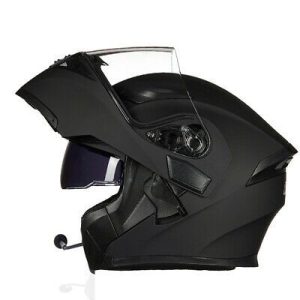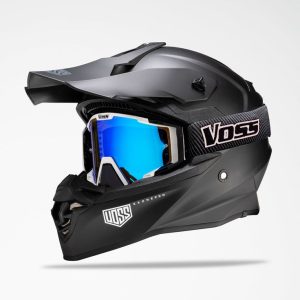For motorcycle riders, safety is paramount. A high-quality helmet is the single most crucial piece of safety gear, protecting your head in the unfortunate event of an accident. Among motorcycle helmets, Snell-certified helmets represent the pinnacle of safety standards, exceeding the baseline requirements set by the Department of Transportation (DOT).
This comprehensive guide delves into the world of Snell motorcycle helmets. We’ll explore the history and significance of the Snell Memorial Foundation’s testing standards, the benefits of choosing a Snell-certified helmet, and key factors to consider when selecting the right one for you. So, buckle up and get ready to prioritize safety on your next ride!
Understanding the Snell Standard: A Legacy of Rigorous Testing
The Snell Memorial Foundation, established in 1970, is a non-profit organization dedicated to improving motorcycle helmet safety. They developed their own rigorous testing standards, exceeding the DOT’s minimum requirements.

Here’s a breakdown of the key differences between DOT and Snell certifications:
-
Impact Testing: Snell tests helmets at higher impact velocities and from multiple angles compared to DOT testing.
-
Penetration Resistance: Snell employs a sharper object to test a helmet’s ability to resist penetration, whereas DOT uses a blunt object.
-
Visor Testing: Snell conducts more comprehensive visor impact and abrasion resistance tests compared to DOT standards.
The Importance of Exceeding Minimum Requirements
While DOT certification ensures a baseline level of safety, Snell certification pushes the boundaries, subjecting helmets to even more demanding tests. This translates to potentially superior protection for your head in a crash.
The Benefits of Choosing a Snell Motorcycle Helmet
There are several compelling reasons to choose a motorcycle helmet:
-
Enhanced Protection: Snell’s stricter testing procedures can result in helmets that offer a higher level of impact absorption and penetration resistance.
-
Improved Visor Performance: With more rigorous visor testing, Snell-certified helmets might provide better visor clarity and durability in the event of an impact.
-
Peace of Mind: Knowing your helmet has passed the industry’s most stringent testing standards can provide significant peace of mind while riding.

Finding the Right Fit: Not Just About Safety
While prioritizing safety is crucial, remember that a helmet’s fit is equally important. An ill-fitting helmet, even if Snell-certified, might not provide optimal protection in a crash. Here are some factors to consider when choosing a Snell-certified helmet:
-
Helmet Type: Select a helmet style that suits your riding style – full-face for maximum protection, modular for versatility, or open-face (not recommended for most riders due to limited protection).
-
Size and Fit: A snug but comfortable fit is essential. Measure your head and refer to the manufacturer’s sizing chart to ensure a proper fit. The helmet should not cause pressure points or move excessively when shaken gently.
-
Weight: Snell-certified helmets might be slightly heavier due to the use of more robust materials. Consider your neck strength and riding style when choosing a weight that feels comfortable.
-
Features: Look for features that enhance comfort and visibility, such as a well-ventilated liner, a fog-resistant visor, and a comfortable chin strap.
Investing in Safety: Selecting the Perfect Snell-Certified Helmet
Snell-certified helmets represent the gold standard in motorcycle helmet safety. By understanding the Snell standard, the benefits it offers, and factors to consider when choosing a helmet, you can make an informed decision that prioritizes your safety on the road.
Equipping for the Ride: Beyond the Snell-Certified Helmet
While a Snell-certified helmet is a crucial safety element, other gear plays a vital role in protecting motorcycle riders:

-
Motorcycle Jacket: Invest in a high-quality jacket made from abrasion-resistant materials like leather or heavy-duty textiles. Ensure a snug fit that offers good coverage.
-
Motorcycle Pants: Similar to the jacket, choose pants made from abrasion-resistant materials that offer complete leg coverage down to the ankles.
-
Motorcycle Gloves: Gloves protect your hands in case of a fall. Look for gloves made from durable materials with good grip and knuckle protection.
-
Motorcycle Boots: Sturdy boots offer ankle and foot protection. Avoid boots with laces that could get caught on the motorcycle.
By equipping yourself with a Snell-certified helmet and additional protective gear, you significantly enhance your safety and minimize the risk of injury in the event of an accident.
Common Misconceptions About Snell Motorcycle Helmets: Debunked!
While Snell-certified helmets offer superior protection, there are some misconceptions surrounding them. Let’s clear the air and ensure you make an informed decision:

-
Myth: Snell Certification Makes Helmets Too Heavy: Advancements in materials and design allow for Snell-certified helmets that are comfortable and manageable for most riders. While they might be slightly heavier than DOT-approved helmets, the difference is negligible for most riders.
-
Myth: Snell Certification Makes Helmets Too Expensive: While Snell-certified helmets may have a slightly higher price tag due to the rigorous testing procedures, the safety benefits they offer far outweigh the cost difference. Consider it an investment in your well-being.
-
Myth: All Snell-Certified Helmets Are Created Equal: There are variations within Snell-certified helmets. Reputable manufacturers continually strive to improve their designs and materials. Research different brands and models to find the Snell-certified helmet that best suits your needs and budget.
-
Myth: A Snell-Certified Helmet Makes Me Invincible: No helmet is invincible. Safe riding practices and avoiding excessive speeds are crucial for accident prevention. A Snell-certified helmet, however, can significantly reduce the risk of head injury in the event of a crash.
By understanding these common misconceptions, you can approach Snell-certified helmets with a clear perspective. They represent the highest standard of safety currently available for motorcycle riders.
The Final Gear Up: Maintaining Your Snell-Certified Helmet
Once you’ve invested in a Snell-certified helmet, proper care and maintenance are essential to ensure optimal performance and longevity:

-
Cleaning: Regularly clean the helmet’s exterior with a mild soap solution and water. Avoid harsh chemicals or abrasive cleaners that can damage the shell or visor.
-
Visor Care: Clean the visor with a microfiber cloth and a visor cleaner specifically designed for motorcycle helmets. Avoid using paper towels or abrasive materials that can scratch the visor.
-
Liner Maintenance: The helmet liner is removable and washable. Follow the manufacturer’s instructions for proper cleaning to maintain breathability and comfort.
-
Inspection: Regularly inspect your helmet for any signs of damage, such as cracks, deep scratches, or loose components. If you find any damage, replace the helmet immediately.
By following these simple maintenance tips, you can ensure your Snell-certified helmet provides optimal protection for years to come.
Ride with Confidence: Invest in Your Safety Today!
Equipping yourself with a Snell-certified motorcycle helmet demonstrates a commitment to prioritizing safety on the road. The superior protection offered by these helmets is an investment in your well-being. Don’t compromise on safety – visit your local power sports dealer today!
Browse their selection of Snell-certified helmets, ensuring a proper fit for optimal protection. With the right gear and a safety-focused mindset, you can ride with confidence and experience the thrill of the open road with peace of mind.


